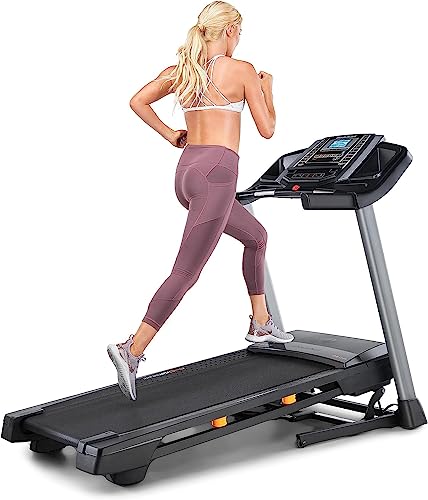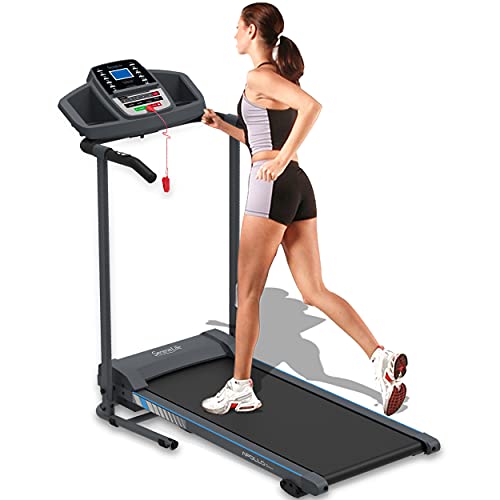You'll Never Guess This Treadmill Incline Workout's Tricks
작성자 Melody
작성일 24-09-19 02:50
조회 5
댓글 0
본문
 How to Use a Treadmill Incline Workout
How to Use a Treadmill Incline WorkoutMany treadmills have the ability to alter the incline of your exercise. A steep climb at a high angle will burn more calories than running on the flat.
 This is a low-impact workout that could be a viable alternative to running for people with joint problems. It can be done in a variety of speed and is simple to alter according to the fitness goals.
This is a low-impact workout that could be a viable alternative to running for people with joint problems. It can be done in a variety of speed and is simple to alter according to the fitness goals.The right incline
It doesn't matter if you're a newbie to treadmills or an experienced professional, incline-training offers countless possibilities to spice up your cardio workouts. The incline feature of treadmills that incline allows you to simulate running outdoors, but without the joint pain. Increasing the intensity of your runs or walks will help you burn more calories and build endurance, strengthen lower leg muscles, and increase your heart rate to increase the flow of blood. You can easily incorporate incline training into your cardio routine by way of an HIIT session or a steady-state workout.
When walking on an incline, be sure to take longer steps and keep your arms pumping. A good rule of thumb is to tighten your arms when you're walking at an electric incline treadmill of 15 percent and relax them when you're at a 1-percent incline. This will improve your walking technique and help prevent injuries. You should also avoid leaning forward too much when walking on a steeper incline as it can cause back pain.
If you're new to treadmill exercises with incline, it's a good idea to begin with a low incline and slowly work up. It's best to be able to comfortably walk for 30 minutes at a moderate pace on flat ground before trying any type of incline. This will help prevent injury and allow you to gradually build up your fitness level.
Most treadmills let you set an incline while you work out. However, some don't allow you to alter the incline manually, and you will need to stop your workout and manually adjust the treadmill's deck to the desired incline setting. This could be a hassle, and not the most convenient when you're doing an interval workout in which the incline fluctuates every few minutes.
It's important to be aware of your HRmax when you're performing a HIIT workout. This will let you be aware of when you've reached your goal heart rate and it is time to increase or decrease speed. If you're doing steady state exercise it's important to monitor your heart rate throughout the exercise and keep it between 80-90% of the maximum heart rate.
Warming up
Treadmill exercises are an effective method to burn calories, but adding an incline boosts the intensity and delivers additional benefits such as functional strength training. If you're new to running or walking on an inclined surface, it is important to warm up before increasing the intensity of your treadmill for small spaces with incline exercise. This will reduce the risk of injury and also prepare your muscles for the more intense work ahead.
If you're just beginning to fitness, beginning your workout with 2 minutes of brisk walking is the best way to begin your warm-up. After you've warmed-up, you can start jogging. After your jog, add another two minutes of fast walking to keep warming your legs. You can then progress to a full body workout which includes bodyweight exercises, such as walking lunges and squats.
A full-body circuit is a great choice because it targets multiple muscle groups and helps to build an energised core. This is a great way to increase your heart rate, without pushing too hard on the treadmill. Ask your fitness instructor for advice when you're unsure of the exercise routine to follow.
Include an incline into your treadmill exercise. This will provide you with the most realistic exercise terrain and boost your VO2 Max, which is the maximum oxygen intake. Walking on an inclined path will help your muscles learn to walk on terrain that is real and can reduce the impact on your knees.
Treadmill incline exercises also target various leg muscle groups and are great for strengthening your lower body. Walking at an angle can increase your range of movement in your arms and strengthen your chest and shoulders.
A high-intensity treadmill exercise is ideal for those who are just beginning and is suitable for those who wish to test themselves and attain higher heart rates without the strain of exercising too hard. Keep track of your heart rate while running at a high-intensity treadmill exercise and stretch afterwards. Stretching will help prevent tight muscles and will help to recover your body from the intense workout.
Intervals
You can alter the intensity of a treadmill incline exercise by using intervals. Interval training is a proven method to burn more calories and build muscle faster. It involves alternating intense workouts with periods of less intense exercise, like a walk or light jog. This type of workout can aid in increasing your VO2 max which is the maximum amount of oxygen your body can take in during exercise.
To get the most benefit of your treadmill incline workout it is recommended to incorporate a mix of jogging and walking. This will ensure that your body can recover between the intervals of high intensity and also prevent injuries. You should also make sure that you warm up prior to starting the intervals.
The first step in designing a treadmill incline workout is to determine your desired heart rate. It should be in the range of 80-90% of your client's maximum heart rate. You will then be able to decide on which slope and speed to use for each interval.
You can use your treadmill's built-in interval programs or create your own. You can, for example begin with a 3 minute interval at an easy jog and gradually increase the incline. Once you've reached your target heart rate, you can continue to jog at a moderate pace for the remainder of the workout.
For the next set, you can walk at an angle of 10 percent and run for three to six repetitions. Then, you can return to jogging at a slow speed for a minute. Repeat this process between five and eight times.
If you're not comfortable running on a treadmill, you could try a running and walking in a incline on uneven ground. This can test your balance and strengthen the muscles in your legs more than the treadmill. It's crucial to examine your knees and ankles for any problems that could be the cause before trying this type of exercise.
You can also include a variety of dumbbell exercises in your incline workouts to build muscle. For example, you can perform lateral raises as well as dumbbell rows during your rest intervals to make the workout more challenging.
Recovery
Most treadmills come with an incline feature that lets you to simulate running and walking uphill. You can alter the incline to make your workout more challenging, or add intervals of greater intensity. This kind of exercise is ideal for people who are looking to improve their cardio and burning calories without having to worry about their joints.
This exercise works different muscles throughout the body, which aids to burn more calories. This can help strengthen the posterior chain, which includes the hamstrings, glutes and the muscles of the calf. Incline treadmill walking also works the muscles that form the calves, such as the smaller peroneal and tibialis anterior muscles. This can improve the flexibility and strength of the muscles and is a good alternative to jogging when you are not comfortable with high-impact exercises.
If you are new to incline-walking, start at a low incline and gradually increase it over time. This will reduce joint pain and allow you to achieve your fitness goals quicker. Listen to your body. Stop exercising if there is any discomfort or discomfort.
To get the most out of your incline workout, it's important to start warming up for five minutes of moderate or level walking on an incline. Also, don't forget to keep track of your heart rate throughout the workout to ensure you stay within your target heart rate zone.
After your first interval, lower the incline by 0% and walk for 3-4 minutes. This recovery phase assists in helping your heart rate return to a normal pace and prepares your body for the next interval of incline.
Repeat this procedure for the rest of your training on an incline. Make sure that the ratio of work to rest as close to 1:1. This will help you increase the intensity of your workout and achieve your desired results in a lesser amount of time. Be sure to stretch after exercising to avoid the tightness of your muscles and other issues with flexibility.
댓글목록 0
등록된 댓글이 없습니다.